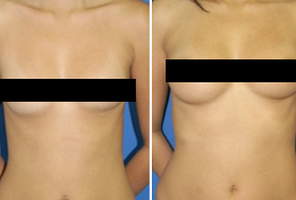The skin has an amazing ability to heal, but it is not always perfect. Any break in the skin, including a surgical incision, can cause a scar. Apart from normal skin healing, there are three main types of scars that can occur on the skin: atrophic, hypertrophic, and keloids.
Atrophic scars
Arophic scars are also known as papyraceous or cigarette-paper scars since they are as thin as paper. Instead of normal, plump, healthy tissue forming over a break in the skin, arophic scars cause a depression in the skin. Collagen, which is a primary protein in the skin that gives it resilience and fullness, is damaged or missing in atrophic scars. While these scars can occur after surgical incisions, most people will experience atrophic scars after a case of cystic acne. Â Acne that forms a cyst, breaks, and then scars may leave an atrophic scar depression.
Hypertrophic scars
In many respects, hypertrophic scars can be thought of as the opposite of atrophic scars. Hypertrophic scars are scars in which the borders of the cut are higher than they should be. Hypertrophic scars have slightly raised borders because, as a reaction to damage, too much collagen is created in and around the cut. In most cases, the collagen in a hypertrophic scar or in hypertrophic acne will go away on its own. Occasionally hypertrophic treatment is required to correct the borders of the scar. In hypertrophic treatment, the hypertrophic scars are folded under and the skin is sutured together. Alternatively, the hypertrophic scar is cut out completely.
Keloid scars
A keloid scar is similar to a hypertrophic scar but in the extreme. Keloid acne and keloid scars occur most commonly in people of African descent and, unlike hypertrophic scars, do not usually go away on their own. The borders of a keloid scar appear “heaped up†and can occur as part of keloid acne or any other break in the skin. Unfortunately keloid scar removal can be difficult because the surgical incision used to remove the scar can lead to a keloid itself.
Consulting with a Plastic Surgeon Professional
If you have a scar that you would like to change, a plastic surgeon is an excellent resource to learn more about the specific scar type and its treatment. In the cases of keloid scars it is very important to speak with a trained professional to discuss realistic expectations and risks associated with scar removal surgery.
Â

